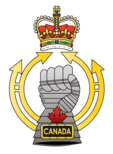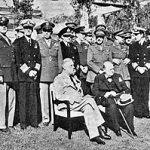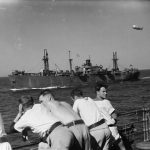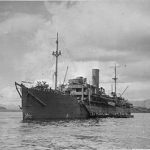On 9 July 1943, both assault convoys rendezvous southwest of Malta and proceeded to Sicily. The enemy seemed to be unaware.
(image - HMS Hilary HQ ship of the attack) During the day the weather was hot and cloudless. But later in the day a gale appeared. This storm led the naval adviser of the Italian Coastal Defence forces to assure his chief that landings were impossible that night.
That evening the wind fell and it appeared that landings would be practicable.
The German operations log showed that at 1630 hours on 9 July 1943 German reconnaissance aircraft spotted convoys steering towards Sicily. By 1840 hours “All troops in Sicily had been alerted.”







